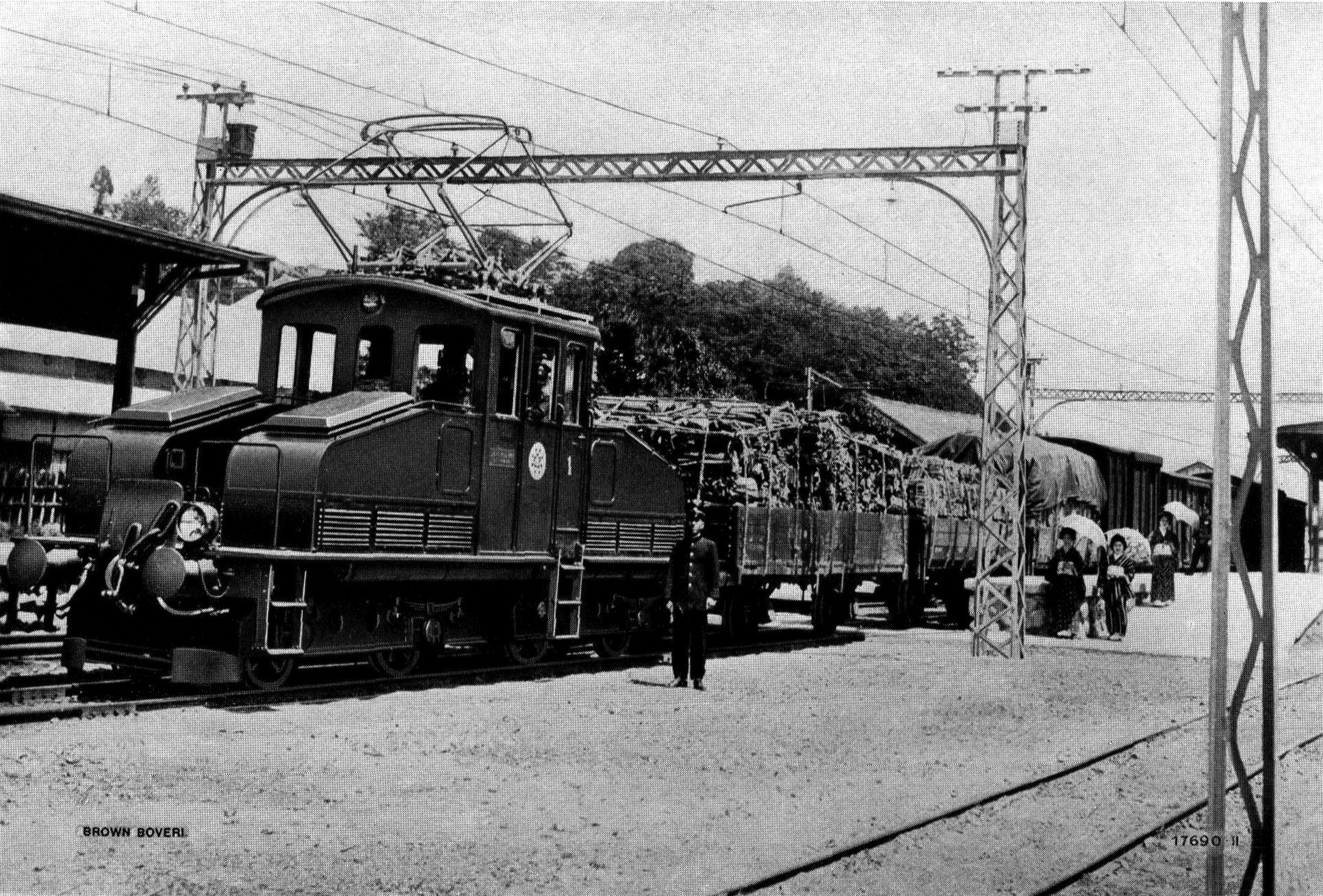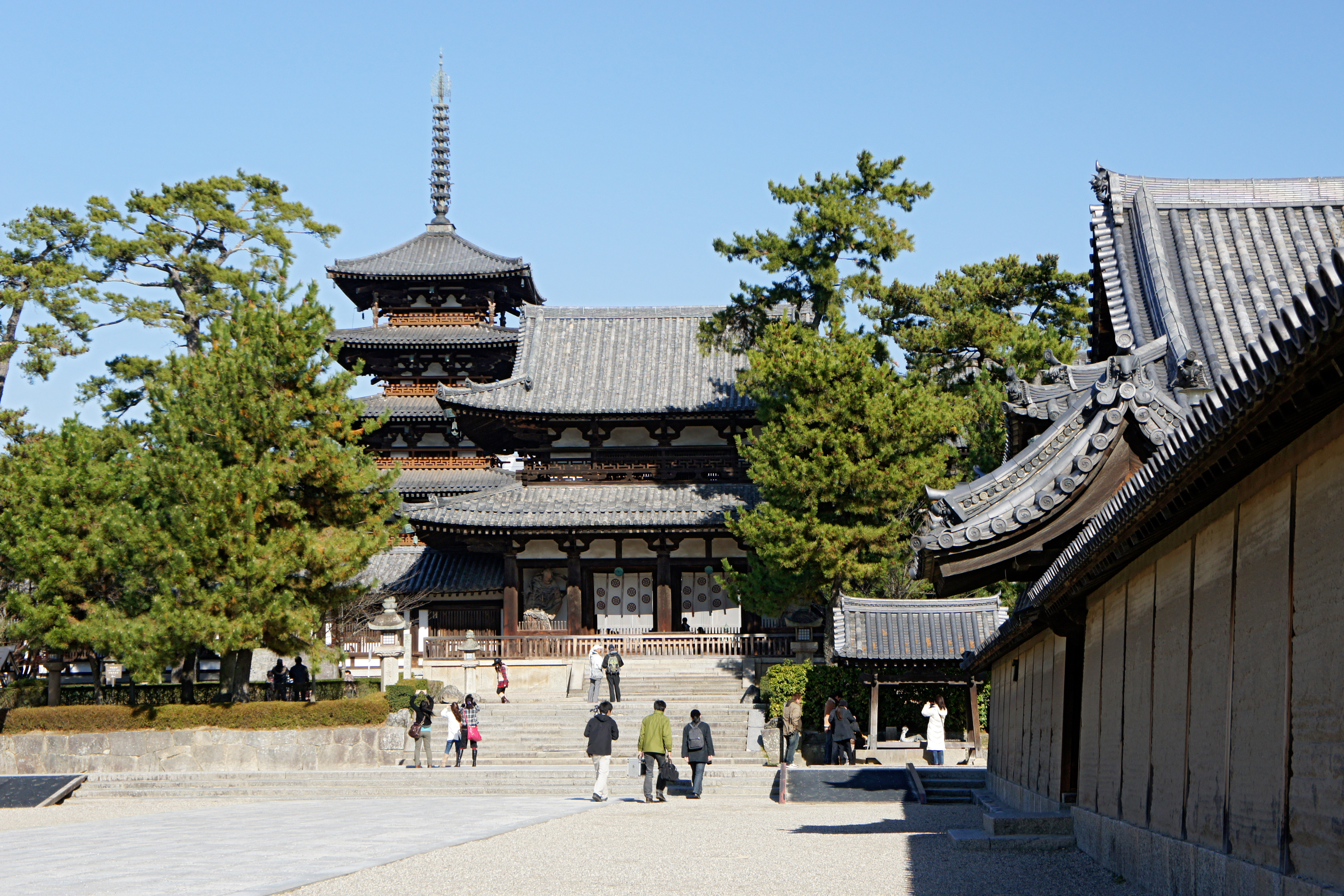|
Shimoichiguchi Station
is a passenger railway station located in the town of Ōyodo, Yoshino District, Nara Prefecture, Japan. It is operated by the private transportation company, Kintetsu Railway. Line Shimoichiguchi Station is served by the Yoshino Line and is 17.0 kilometers from the starting point of the line at and 56.7 kilometers from . Layout The station ground-level station with one side platform and one island platform An island platform (also center platform (American English) or centre platform (British English)) is a station layout arrangement where a single platform is positioned between two tracks within a railway station, tram stop or transitway inte .... The effective length of the platform is long enough for four cars. The station building is on the south side (single platform 3 for upbound trains), and is connected to the island platforms for downbound trains (platforms 1 and 2) by a level crossing. Platforms History The station opened on 25 October 1912 when the Yos ... [...More Info...] [...Related Items...] OR: [Wikipedia] [Google] [Baidu] |
Kintetsu Railway
, referred to as and officially Kinki-Nippon Railway, is a Japanese passenger railway company, managing infrastructure and operating passenger train service. Its railway system is the largest in Japan, excluding Japan Railways Group. The railway network connects Osaka, Nara, Nara, Nara, Kyoto, Nagoya, Tsu, Mie, Tsu, Ise, Mie, Ise, and Yoshino, Nara, Yoshino. Kintetsu Railway Co., Ltd. is a wholly owned subsidiary of Kintetsu Group Holdings Co., Ltd. History On September 16, 1910, was founded and renamed a month after. Osaka Electric Tramway completed Ikoma Tunnel and started operating a line between Osaka and Nara (present-day Nara Line (Kintetsu), Nara Line) on April 30, 1914. The modern Kashihara, Osaka, and Shigi lines were completed in the 1920s, followed by the Kyoto Line (a cooperative venture with Keihan Electric Railway). Daiki founded in 1927, which consolidated on September 15, 1936. In 1938, Daiki teamed up with its subsidiary to operate the first private rail ... [...More Info...] [...Related Items...] OR: [Wikipedia] [Google] [Baidu] |
Commuter Rail
Commuter rail or suburban rail is a Passenger train, passenger rail service that primarily operates within a metropolitan area, connecting Commuting, commuters to a Central business district, central city from adjacent suburbs or commuter towns. Commuter rail systems can use locomotive-hauled trains or multiple units, using electric or diesel propulsion. Distance charges or zone pricing may be used. The term can refer to systems with a wide variety of different features and service frequencies, but is often used in contrast to rapid transit or light rail. Some services share similarities with both commuter rail and high-frequency rapid transit; examples include German S-Bahn in some cities, the Réseau Express Régional (RER) in Paris, the Milan S Lines, S Lines in Milan, many Japanese commuter systems, the East Rail line in Hong Kong, and some Australasian suburban networks, such as Sydney Trains. Many commuter rail systems share tracks with other passenger services and Cargo ... [...More Info...] [...Related Items...] OR: [Wikipedia] [Google] [Baidu] |
Yoshino Line
The is a railway line in Nara Prefecture, Japan, operated by the private railway operator Kintetsu Railway. It connects in Kashihara and in Yoshino. All Express and Limited Express trains continue to and from Ōsaka Abenobashi Station on the Minami Osaka Line. History The Co. opened the Yoshino - Muda section in 1912, and extended the line to Kashiharajingū-mae in 1923, electrifying the entire line at 1500 VDC at that time. Amongst the rolling stock were three Bo'Bo' goodtrain locomotives delivered from Brown, Boveri & Cie in Switzerland Switzerland, officially the Swiss Confederation, is a landlocked country located in west-central Europe. It is bordered by Italy to the south, France to the west, Germany to the north, and Austria and Liechtenstein to the east. Switzerland .... In 1929 the company merged with the Osaka Electric Railway Co., which merged with Kintetsu in 1944. Freight services ceased in 1984, and CTC signalling was commissioned in 2001. Kinte ... [...More Info...] [...Related Items...] OR: [Wikipedia] [Google] [Baidu] |
Nara Kotsu Bus Lines
, usually shortened to as or abbreviated to as , is a bus operator that provides scheduled local services in Nara Prefecture, the southern part of Kyoto Prefecture, the southeastern part of Wakayama Prefecture, and the central part of Osaka Prefecture in Japan. The operator also provides scheduled sightseeing bus services within Nara, airport bus services to and from Osaka Kansai International Airport and Itami Airport, and intercity bus services to and from Chiba, Nagoya, Tokyo, and Yokohama is the List of cities in Japan, second-largest city in Japan by population as well as by area, and the country's most populous Municipalities of Japan, municipality. It is the capital and most populous city in Kanagawa Prefecture, with a popu .... Charter bus, Charter, tour bus, tour, and contract bus services are also provided by the operator. History The history of Nara Kotsu Bus Lines' traces its origin back to 1929 when was founded in Nara City. The bus operator eventually has ... [...More Info...] [...Related Items...] OR: [Wikipedia] [Google] [Baidu] |
Railway Station
Rail transport (also known as train transport) is a means of transport using wheeled vehicles running in railway track, tracks, which usually consist of two parallel steel railway track, rails. Rail transport is one of the two primary means of land transport, next to road transport. It is used for about 8% of passenger and rail freight transport, freight transport globally, thanks to its Energy efficiency in transport, energy efficiency and potentially high-speed rail, high speed.Rolling stock on rails generally encounters lower friction, frictional resistance than rubber-tyred road vehicles, allowing rail cars to be coupled into longer trains. Power is usually provided by Diesel locomotive, diesel or Electric locomotive, electric locomotives. While railway transport is capital intensity, capital-intensive and less flexible than road transport, it can carry heavy loads of passengers and cargo with greater energy efficiency and safety. Precursors of railways driven by human or an ... [...More Info...] [...Related Items...] OR: [Wikipedia] [Google] [Baidu] |
Ōyodo, Nara
280px, Ōyodo town hall is a town located in Yoshino District, Nara Prefecture, Japan. , the town had an estimated population of 15,856 in 7364 households, and a population density of 420 persons per km2. The total area of the town is . Geography Ōyodo is located on the right bank of the Yoshino River in central Nara Prefecture, almost in the center of the Kii Peninsula. Surrounding municipalities Nara Prefecture * Gojō * Gose * Shimoichi * Takatori * Yoshino Climate Ōyodo has a humid subtropical climate (Köppen ''Cfa'') characterized by warm summers and cool winters with light to no snowfall. The average annual temperature in Ōyodo is 14.0 °C. The average annual rainfall is 1636 mm with September as the wettest month. The temperatures are highest on average in August, at around 25.9 °C, and lowest in January, at around 2.4 °C. Demographics Per Japanese census data, the population of Ōyodo is as shown below History The area of Ōyodo was ... [...More Info...] [...Related Items...] OR: [Wikipedia] [Google] [Baidu] |
Yoshino District, Nara
is a district located in Nara Prefecture, Japan. In 2020, the district had an estimated population of 37,086 and a density Density (volumetric mass density or specific mass) is the ratio of a substance's mass to its volume. The symbol most often used for density is ''ρ'' (the lower case Greek letter rho), although the Latin letter ''D'' (or ''d'') can also be u ... of 18.05 persons per km2. The total area is 2,055 km2. On September 25, 2005, the villages of Ōtō and Nishiyoshino merged into the city of Gojō. Towns and villages * Higashiyoshino * Kamikitayama * Kawakami * Kurotaki * Nosegawa * Ōyodo * Shimoichi * Shimokitayama * Tenkawa * Totsukawa * Yoshino References Districts in Nara Prefecture {{Nara-geo-stub ... [...More Info...] [...Related Items...] OR: [Wikipedia] [Google] [Baidu] |
Nara Prefecture
is a Prefectures of Japan, prefecture of Japan located in the Kansai region of Honshu. Nara Prefecture has a population of 1,321,805 and has a geographic area of . Nara Prefecture borders Kyoto Prefecture to the north, Osaka Prefecture to the northwest, Wakayama Prefecture to the southwest, and Mie Prefecture to the east. Nara (city), Nara is the capital and largest city of Nara Prefecture, with other major cities including Kashihara, Nara, Kashihara, Ikoma, Nara, Ikoma, and Yamatokōriyama. Nara Prefecture is located in the center of the Kii Peninsula on Japan's Pacific Ocean coast, and is one of only eight landlocked prefectures. Nara Prefecture has the distinction of having more UNESCO World Heritage listings than any other prefecture in Japan. History The Nara Prefecture region is considered one of the oldest regions in Japan, having been in existence for thousands of years, and is widely viewed as the Japanese cradle of civilization. Like Kyoto, Nara was one of Imperial ... [...More Info...] [...Related Items...] OR: [Wikipedia] [Google] [Baidu] |
Side Platform
A side platform (also known as a marginal platform or a single-face platform) is a platform positioned to the side of one or more railway tracks or guideways at a railway station, tram stop, or transitway. A station having dual side platforms, one for each direction of travel, is the basic design used for double-track railway lines (as opposed to, for instance, the island platform where a single platform lies between the tracks). Side platforms may result in a wider overall footprint for the station compared with an island platform, where a single width of platform can be shared by riders using either track. In some stations, the two side platforms are connected by a footbridge or tunnel to allow safe access to the alternate platform. While a pair of side platforms is often provided on a dual-track line, a single side platform is usually sufficient (trains are usually only boarded from one side) for a single-track line. Layout Where the station is close to a level crossing (g ... [...More Info...] [...Related Items...] OR: [Wikipedia] [Google] [Baidu] |
Island Platform
An island platform (also center platform (American English) or centre platform (British English)) is a station layout arrangement where a single platform is positioned between two tracks within a railway station, tram stop or transitway interchange. Island platforms are sometimes used between the opposite-direction tracks on twin-track route stations as they are cheaper and occupy less area than other arrangements. They are also useful within larger stations, where local and express services for the same direction of travel can be accessed from opposite sides of the same platform instead of side platforms on either side of the tracks, simplifying and speeding transfers between the two tracks. The historical use of island platforms depends greatly upon the location. In the United Kingdom the use of island platforms on twin-track routes is relatively common when the railway line is in a cutting or raised on an embankment, as this makes it easier to provide access to the platf ... [...More Info...] [...Related Items...] OR: [Wikipedia] [Google] [Baidu] |




